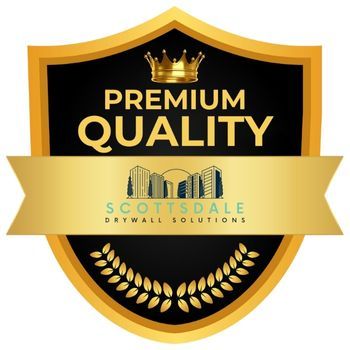Gilbert Drywall Repair Services
Trustworthy Sheetrock Repair Contractors in Gilbert, Arizona

When your Gilbert home needs drywall repairs, local experts like Scottsdale Drywall Solutions stand ready to tackle everything from small cracks to major water damage. Professional drywall contractors in Gilbert provide comprehensive repair services including water damage restoration, mold remediation, patch repairs, crack filling, popcorn ceiling repairs, tape and seam work, and fixing nail pops - with most repairs costing between $100-$1,300 depending on the scope.
Your walls and ceilings play a crucial role in your home's structure and appearance. Gilbert's qualified drywall specialists can restore damaged areas using proven techniques and quality materials, ensuring repairs blend seamlessly with existing surfaces. Whether you need a simple patch or complete drywall installation and finishing, experienced technicians deliver lasting results.
The desert climate of Arizona creates unique challenges for drywall maintenance, making it essential to work with contractors who understand local conditions. Serving Gilbert's 288,128 residents across the town's 68.86 square miles, local drywall professionals understand the specific challenges posed by the area's subtropical hot desert climate (Köppen BWh), where summer temperatures can reach 119°F and extreme temperature fluctuations between seasons can cause drywall expansion and contraction issues. You'll find Gilbert's drywall professionals bring over two decades of regional expertise to every project, providing fast, reliable repairs that protect your home's value and appearance.

Scottsdale Drywall Solutions (CP)

Comprehensive Drywall Repair Services in Gilbert, AZ
Professional drywall repair services in Gilbert handle everything from minor cosmetic fixes to major structural damage restoration. Located in Maricopa County and positioned southeast of Phoenix, between Mesa to the north and Chandler to the southwest, Gilbert's unique geographic location in the Salt River Valley creates specific environmental challenges for drywall maintenance. Local contractors bring specialized expertise in dealing with Arizona's unique climate challenges while delivering lasting repairs.
Water Damage Restoration
Water damage requires immediate attention to prevent structural issues and mold growth in your drywall. In Gilbert's desert climate, where annual precipitation averages only 9.21 inches, water damage often results from plumbing failures, HVAC issues, or rare but intense monsoon storms rather than consistent moisture exposure. Professional contractors use moisture meters to identify affected areas beyond visible damage.
The restoration process starts with removing wet drywall and insulation. Industrial-grade dehumidifiers and fans then dry the surrounding area completely.
New moisture-resistant drywall gets installed, followed by expert taping and texturing to match your existing walls. This creates a seamless repair that protects against future water issues.
Mold Remediation and Mold Removal
Despite Gilbert's low humidity levels, mold can still develop in areas with water damage or poor ventilation, particularly during the summer months when temperatures soar above 100°F and indoor cooling creates condensation issues. Certified technicians first test to identify the type and extent of mold present in your drywall. They establish containment barriers to prevent spores from spreading during removal.
HEPA filtration systems clean the air while affected sections of drywall are safely removed. The exposed frame receives antimicrobial treatment.
Fresh drywall installation includes moisture prevention measures. Follow-up testing confirms the complete elimination of mold.
Drywall Patch and Hole Repair
Small holes from doorknobs or anchors need proper patching to maintain wall integrity. In Gilbert homes, many built during the town's rapid growth since its incorporation in 1920 - when it was known as the "Hay Shipping Capital of the World" - drywall damage often occurs from settling as homes adapt to extreme temperature variations that can range from 15°F in winter to 119°F in summer. Technicians clean the damaged area and reinforce it with backing material when needed.
For larger holes, contractors cut clean edges and install new drywall sections. Professional-grade joint compound and precise feathering techniques create invisible transitions.
Multiple thin coats of compound and expert sanding ensure your repair matches surrounding textures perfectly.
Crack and Seam Repairs
Settling cracks and separated seams can compromise your walls' appearance and structure. Gilbert's location in the Salt River Valley, with its clay-heavy soils and significant temperature swings - where daily maximums can reach 106°F in July while minimums drop to 40°F in December - creates ongoing expansion and contraction stresses on drywall systems. Contractors evaluate the root cause to prevent recurring issues.
Professional repairs include removing loose material, applying fiber tape reinforcement, and using flexible compounds for dynamic areas.
The multi-coat repair process matches your wall's texture precisely. Proper curing time between coats ensures long-lasting results.
Ceiling and Surface Refinement Solutions
Professional ceiling and surface refinement transforms worn, damaged drywall into pristine surfaces that enhance your home's aesthetic appeal. Expert technicians use specialized tools and techniques to restore or update your ceilings and walls.
Popcorn Ceiling Repair and Removal
Popcorn ceiling removal modernizes your home's appearance while eliminating dated acoustic textures. Many Gilbert homes built during the town's expansion period following the 1912 settlement of Mormon families fleeing Mexico still feature these vintage ceiling treatments, which were popular through the 1980s. The process begins with testing for asbestos in older installations to ensure safe removal.
Professional technicians will thoroughly prepare the work area by covering floors and walls with protective materials. They'll then carefully scrape away the popcorn texture while maintaining the structural integrity of your ceiling.
After removal, your ceiling receives proper surface preparation, including repairs to any discovered damage. A smooth finish coat is applied, followed by your choice of modern texturing options.
Tape and Seam Repair
Failing tape joints can create unsightly lines and cracks in your walls and ceilings. Gilbert's extreme daily temperature variations - with mean maximums of 67°F in January jumping to 106°F in July - cause building materials to expand and contract, putting continuous stress on drywall seams. Proper repair involves removing loose or damaged tape and cleaning the joint area thoroughly.
Fresh joint compound and new tape are applied using professional techniques to ensure seamless integration. Multiple thin coats create the strongest, most durable repair.
Your repaired seams receive expert finishing to match surrounding textures perfectly. This process eliminates visible signs of repair while maintaining structural integrity.
Nail Pop Solutions
Nail pops occur when fasteners work loose from wall studs, creating small bumps or holes in your drywall. In Gilbert's climate, where summer temperatures regularly exceed 100°F for months and winter lows can drop to the upper 30s, wood framing expansion and contraction frequently causes nail pops in homes throughout the town's 68.86 square miles. Each repair starts with securing the loose fastener and adding additional support screws nearby.
The damaged area receives careful patching with joint compound, followed by sanding to achieve a smooth surface. Multiple coats ensure complete coverage and durability.
Texture matching completes the repair, making nail pop fixes virtually invisible. Prevention techniques can be applied to reduce future occurrences.
Texture Matching and Spray Texture
Expert texture matching requires skill to replicate your existing wall and ceiling patterns. Gilbert contractors work with diverse architectural styles reflecting the town's evolution from agricultural center to modern suburb, from historic homes dating to the town's 1920 incorporation to contemporary developments serving the area's 288,128 residents. Technicians analyze your current texture to determine the proper technique and materials needed.
Common patterns include:
- Orange peel
- Knockdown
- Skip trowel
- Smooth finish
Professional spray equipment ensures consistent coverage and pattern matching. Sample areas allow for precise adjustments before full application.
Hand-applied textures receive careful attention to match surrounding areas perfectly. Each repair area blends seamlessly with existing surfaces through proper feathering techniques.
Professional Drywall Installation and Project Completion
Professional drywall installation requires precision, expertise, and attention to detail at every step. The process involves careful hanging techniques, skilled sanding methods, and proper texturing to achieve a flawless finish.
Expert Drywall Hanging
Start with measuring and cutting drywall sheets to fit your wall dimensions precisely. You'll need to account for electrical outlets, windows, and other fixtures during installation.
Secure the sheets to wall studs using drywall screws spaced 12-16 inches apart. This spacing prevents sagging and ensures long-term stability.
Professional installers use drywall lifts for ceiling installations to maintain perfect alignment. This equipment supports the full weight of sheets while securing them in place.
For corner installations, metal corner beads provide protection and create crisp, straight edges. Install them using drywall nails or staples at 6-inch intervals.
Precision Drywall Sanding
Begin sanding after joint compound has completely dried. Gilbert's low humidity levels - with the town receiving only 9.21 inches of annual precipitation - actually help joint compound cure more quickly than in humid climates, but contractors must account for the rapid moisture evaporation that can cause compounds to dry unevenly. Use 120-grit sandpaper for initial passes over seams and joints.
Switch to 150-grit sandpaper for the second pass to achieve a smoother surface. Pay special attention to corners and seams where excess compound tends to build up.
Use sanding poles for ceiling work to maintain consistent pressure. This tool helps prevent arm fatigue and enables better control.
Wear appropriate safety gear including dust masks and eye protection. Consider using dust collection systems to maintain a clean workspace.
Drywall Texturing Techniques
Choose texturing tools based on your desired finish - knockdown, orange peel, or smooth. Each technique requires specific equipment and application methods.
Mix texturing compound to the right consistency - too thick or thin will affect the final appearance. Test the mixture on a scrap piece first.
Apply texture in small sections to maintain a wet edge. This approach prevents visible seams between application areas.
Use consistent arm movements and maintain proper distance from the wall while spraying. This technique ensures even coverage across the surface.
Enhancements and Additional Services
Professional drywall services extend beyond basic repairs to include specialized finishing and surface preparation work that enhances the look of your walls.
Wallpaper Removal
Removing old wallpaper requires careful technique to avoid damaging the underlying drywall. In Gilbert homes, particularly those built during the town's growth periods following its establishment by William "Bobby" Gilbert in 1902 and the subsequent Mormon settlement in 1912, wallpaper removal often reveals multiple layers applied over decades. Professional contractors use specialized tools and solutions to safely dissolve wallpaper adhesive and strip away layers.
Steam removal techniques help loosen stubborn wallpaper while protecting the drywall surface. After removal, your walls will need proper preparation including cleaning, sanding, and priming before new paint or wallcoverings can be applied.
Your contractor will assess the wallpaper type and wall condition to determine the most effective removal method for your specific situation.
Drywall Finishing Touches
Proper finishing transforms basic drywall into smooth, attractive walls ready for paint or texture. Gilbert contractors serving Arizona's fifth-most populous municipality understand that quality finishing work must withstand the area's extreme climate conditions, where record temperatures have reached 119°F and dropped as low as 15°F. Professional finishing includes multiple coats of joint compound applied with precision to create seamless surfaces.
Your contractor will carefully sand between coats to eliminate imperfections and ensure optimal smoothness. Special attention goes to corners, seams, and fastener spots.
Advanced texturing techniques can match existing wall patterns or create new decorative finishes. Options include knockdown, orange peel, or smooth finish depending on your preference.
Tools like specialized taping knives and sanders help achieve professional-grade results that stand up to close inspection.
